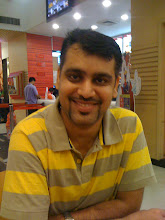Monday , Aug 03, 2009
Source: http://timesofindia.indiatimes.com
Nearly 3,000 accidents have been reported on Delhi roads in the first six months of this year (till June 15), in which more than 916 persons have died. When compared to the same period last year, statistics reflect a decline of 21% in the total number of road accidents in the city. But the figure is still very high, and experts reveal that the toll of those killed on the roads is way higher than the fatality rates of ailments like cancer and heart attacks in Delhi.
Shockingly, the number of fatal accidents by DTC buses has seen a sharp increase of 59% in 2009, as these buses have already been responsible for 27 fatal accidents, compared to just 17 last year. The "killer'' Bluelines have been involved in 48 fatal accidents. The statistic was the same last year too.
The decrease in the number of accidents despite the fact that the number of vehicles on city roads is increasing by nearly 1,000 a day, according to the traffic police, could be attributed to a new system of accident analysis which is being adopted for each and every collision on the roads. According to the procedure, traffic policemen visit the site of every accident and fill up a detailed proforma to detail the causes of the accident, so that corrective action can be initiated accordingly. An analysis of the responses for 2008 has thrown up some startling facts. Times City shares them with you.
Contrary to popular perception that accidents `just happen' in the capital, the most common cause of accidents in Delhi is driver's fault, which caused about 1806 accidents last year, amounting to nearly 69% of the total 2015 accidents. The fault of the victim caused another 7% more accidents (171), about 6% were due to faulty road environment like poor lighting, unguarded digging, civil works or bad weather and 3% (68) were caused by bad designing of roads where basics like central verges were missing. Another 14 accidents (1%) happened because of mechanical faults in vehicles.
The police found that in nearly 461 accidents (26%), overspeeding was found to be the major offence by drivers. Jumping red signals, especially at night when the police presence is thin, was found to be the culprit in another 298 accidents (17%). Other offences like rash driving, lane indiscipline, sudden application of brakes, drunken driving and reversing the vehicle without looking what is at the rear were seen as the other causes for fatal accidents.
In the absence of proper road engineering cells in maintenance agencies, faulty road design like missing central verge, hole or pit on roads, potholes, narrow carriageways and sharp curves caused numerous accidents on city roads. The most common reason for accidents out of all of these, according to the traffic police, is missing central verges especially in outer Delhi areas due to which head-on collisions happen. These accidents are mostly fatal.
With rampant construction going on in the city and roads being dug up being a common sight, negligence of civic agencies is another major cause for accidents. As many as 78 accidents occurred last year due to improper streetlighting on main roads. Another 34 accidents were caused by bad weather like fog and heavy rain, followed by nine accidents due to unguarded civil work, three accidents due to slippery roads, and two due to the glare caused by vehicles using high beam.
In certain cases, it was found that the cause of the accident was actually the fault of the victim. The analysis revealed that 73 accidents happened due to rash driving by the vehicle driven by the victim, 34 when the victim (pedestrian) was hurriedly crossing a main road, 10 due to lane indiscipline, nine when the victim was boarding a moving bus, four when the victim suddenly applied the brakes and one due to drunken driving.
Based on the analysis compiled, the traffic police devised a strategy for prosecution. "Despite the fact that the challan amount has got reduced again and the number of vehicles on Delhi roads is increasing, we have managed to bring down the accident rate. The analysis has been used by us to devise specific solutions. For instance, it was found that two-wheelers drive rashly and are involved in several accidents. So this year, there has been a focus on their prosecution. Till June 15 this year, 19,526 two-wheelers have been prosecuted as against 1,684 last year,'' said S N Shirvastava, joint commissioner of police (traffic).
The overall prosecutions have also risen by 53% from 10,34,008 challans till June 15 last year to 15,83,747 in 2009.
Monday, August 3, 2009
Subscribe to:
Post Comments (Atom)




No comments:
Post a Comment